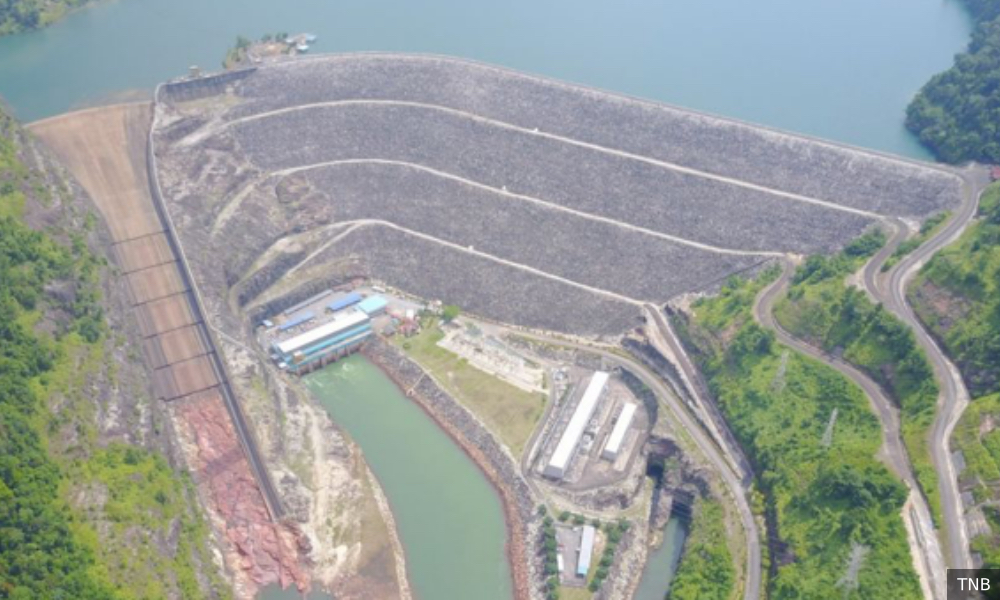The impacts of climate change, such as extreme, severe droughts, heavier rains and hotter temperatures, have been felt almost throughout the country.
In Terengganu, although such impacts had yet to be fully felt statewide, efforts have been taken by various authorities to ensure that the adverse impact would not affect the lives of many people, plants and animals in the state.
The state’s main water supply provider, Syarikat Air Terengganu Sdn Bhd (Satu), had begun carrying out continuous monitoring on water sources in each district even though no incident of water supply shortage was reported so far.
Its CEO, Atemin Sulong, said if the situation turned critical, Satu would work closely with Tenaga Nasional Berhad (TNB) to release water from the Kenyir Dam in Hulu Terengganu to increase the water level at its water catchment areas.
“Our main sources of water are the rivers in the state...we expect the dry spell to begin anytime now until July, with the most critical period to be in April.
“Should there be water disruptions, we are prepared to send our water tanker lorries to the affected areas, besides asking the TNB to increase the amount of water released from the Kenyir Dam (below),” he told Bernama when contacted.

He said another measure would be carrying out water rationing during non-peak hours starting from midnight to 5am as there would be less water consumption during that period.
He also advised the consumers to use water wisely and try to avoid wasting water during the draught.
Meanwhile, Terengganu Fire and Rescue Department fire station operation management division chief Mohd Mazimi Mohamad said cooperation from the public in avoiding open burning activities was very much needed during this hot and dry season.
He said it was feared that if the activities were done in a bush, the fire could not be controlled and would spread quickly to residential areas.
“Periodical monitoring at forest fire-prone areas are also being carried out by the relevant fire stations as part of our preventive measures. Among the areas are in Bidong Valley in Setiu, Kampung Tok Kah and Kampung Batu 7 in Dungun, Kampung Lubuk Kawah and Kampung Lubuk Cabang in Kerteh, Santong in Paka and Kampung Tembila in Besut,” he said.
To ensure that the firefighters would have sufficient water supply during fire operations, he said they would collaborate with the Department of Irrigation and Drainage to expand water canal system and build tube wells in the fire-prone areas.
Agropreneur Mohd Hafizuddin Mohd Zaky, 29, who operates a watermelon farm, had also begun to build underground water pipes as a preparation to face the dry spell.
He said this was a lesson learnt after most of his crop died due to water shortage during the dry season last year.
“This time around, I’m making early preparation...and changing to the larger water pipes,” he said.
Dams in Perak have 3-month supply
Meanwhile, Perak Water Board general manager Mohd Yusof Mohd Isa said there were no significant reductions in water levels at the dams in the state, can supply water for domestic use statewide for three months despite the hot weather phenomenon
Currently, he said the water level of the Air Kuning Dam was at 42.52 metres while the Sultan Azlan Shah Dam was at 243.9 metres.
‘’The normal level for the Air Kuning Dam is 42.5 metres while the Sultan Shah Dam is 245 metres.This shows the water at the dams are adequate to be supplied to the consumers,’’ he told Bernama today.
Perak Drainage and Irrigation Department director Ahmad Anuar Othman said, to date, the water level at the Bukit Merah Dam in Semanggol was 9.08 metres, namely, exceeding the normal level of 8.69 metres.
‘’Our raw water supply is adequate, full and at a good level. There is no indication the water level at the dam will drop to the critical level,’’ he said.
Ahmad said that as a precautionary measure the department had provided a water contingency plan to pump water from Sungai Kerian or Sungai Kurau if a water deterioration occurred.
The Air Kuning Dam supplied raw water to the Air Kuning Water Treatment Plant for residents around Taiping while the Sultan Azlan Shah Dam channeled water to residents in the Kinta and Kampar districts.
Meanwhile, the Bukit Merah Dam was the source of water for a 23,000 ha padi planting area in the Kerian district and supplied drinking water to over 250,000 residents and the need of the industry in Kamunting, Taiping.
The hot weather phenomenon afflicting the western part of the country and Sabah was expected to continue until the end of March and this is a normal incident in the country towards the tail end of the north east monsoon.
- Bernama

